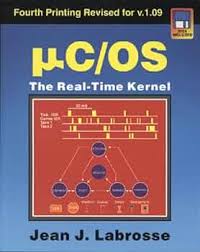White Paper: µC/OS Real-Time Kernel
Abstract
This white paper provides a comprehensive overview of the µC/OS real-time kernel, a popular and widely used kernel for embedded systems. It explores the key features, architecture, and functionalities of µC/OS, highlighting its benefits and applications in various domains.
Introduction
µC/OS (Microcontroller Operating System) is a real-time kernel designed specifically for embedded systems. It offers a robust and efficient environment for multitasking, task scheduling, inter-task communication, and resource management. µC/OS is renowned for its portability, scalability, and ease of use, making it a popular choice for developers working on a wide range of embedded applications.
Key Features and Functionalities
- Task Management:
- Task creation, deletion, and suspension.
- Task priority-based preemptive scheduling.
- Task synchronization using semaphores, mutexes, and message queues.
- Interrupt Handling:
- Efficient interrupt handling and context switching.
- Interrupt-driven I/O and event processing.
- Time Management:
- Real-time clock and tick timer.
- Time-based scheduling and delay functions.
- Memory Management:
- Static and dynamic memory allocation.
- Memory protection and usage tracking.
- Inter-Task Communication:
- Message queues for asynchronous communication.
- Semaphores and mutexes for synchronization.
- Event Flags:
- Event-driven programming and signaling.
µC/OS Architecture
The µC/OS kernel is typically implemented as a set of C functions and data structures. It operates on top of a microcontroller's hardware and provides a well-defined API for application developers. The kernel's architecture includes: Contact ias-research.com for details.
- Task Control Block (TCB): A data structure that stores information about each task, such as its priority, state, and stack pointer.
- Task Scheduler: The component responsible for selecting the highest-priority ready task for execution.
- Interrupt Service Routines (ISRs): Functions that handle hardware interrupts and trigger kernel services.
Applications of µC/OS
µC/OS is widely used in various embedded systems applications, including:
- Industrial Automation: Robotics, factory automation, and process control.
- Consumer Electronics: Smartphones, digital cameras, and gaming consoles.
- Medical Devices: Medical imaging equipment, patient monitoring systems, and implantable devices.
- Automotive Systems: Engine control units (ECUs), infotainment systems, and driver assistance systems.
Benefits of Using µC/OS
- Portability: µC/OS is designed to be easily ported to different microcontroller platforms.
- Efficiency: The kernel is optimized for resource-constrained environments and provides efficient task scheduling and resource management.
- Reliability: µC/OS has a proven track record of reliability and stability in embedded systems.
- Ease of Use: The kernel provides a well-defined API and comprehensive documentation, making it easy for developers to use.
References
- Jean J. Labrosse. µC/OS-II: The Real-Time Kernel.* Embedded Systems Building Blocks.
- µC/OS-III Real-Time Kernel. Micrium, Inc.
- Embedded Systems Development: https://en.wikipedia.org/wiki/Real-time_operating_system
Conclusion
µC/OS is a powerful and versatile real-time kernel that has been widely adopted in embedded systems development. Its key features, architecture, and ease of use make it a valuable tool for developers working on a variety of applications. By understanding the fundamentals of µC/OS, developers can effectively leverage its capabilities to create reliable and efficient embedded systems.



